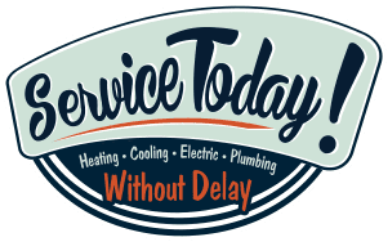
Carbon Monoxide and Fire Alarm Installationin Cape Coral
Keeping Cape Coral Safe from Smoke & CO Gas
Smoke and carbon monoxide (CO) are among the deadliest elements you can encounter in your home. Early detection can save your life and allow your family to get to safety. Service Today provides fire and CO alarm services in Cape Coral, as we care deeply about the health and safety of our customers. Our Cape Coral electricians ensure fire alarms and carbon monoxide detectors are installed properly and function as they are intended to. And in addition to your protection, we offer a money back guarantee to ensure the quality of our services meets and exceeds your expectations.
Given that over 30,000 people die every year in home fires1, and 20,000+ require emergency care due to carbon monoxide poisoning2, it’s important to follow the requirements and recommendations below.
Florida Fire Alarm Requirements
Currently, the Florida Fire Prevention code requires new construction to have dual powered smoke detectors, or those that are powered by electrical current and a battery. As of January 1, 2015, Florida law requires that whether a smoke alarm is newly installed or replaced, the new device must be powered by at least a 10-year non-removable, non-replaceable battery.
Florida law also requires every existing home to have at least one smoke detector outside every sleeping area. One detector is also required to be installed on every level, including the basement, and in or near a living room or den, to ensure everyone can hear the alarm when it goes off. In homes with hearing-impaired residents, smoke detectors that also flash a light in addition to sounding an alarm should be installed.
Florida CO Alarm Requirements
In addition to fire alarm installation, the state of Florida requires the use of CO detectors. Florida Statute 553.885 requires carbon monoxide alarm installation within 10 feet of rooms used for sleeping in a new building or addition with a fossil-fuel burning appliance, fireplace, or attached garage or where there’s any gas-burning fixture, feature, or element. Carbon monoxide is produced when natural gas, propane, oil, kerosene, charcoal, or wood is not burned completely. It can be released by cars, portable generators, lawn mowers, power washers, or any equipment that uses an internal combustion engine.
Where to Install Smoke and Fire Alarms
Each alarm installed should have the label of an independent testing laboratory. Only if you are awake are the symptoms of carbon monoxide poisoning obvious. Smoke from a fire can reach you and have deadly consequences when you’re sleeping as well. Alarms should therefore be installed near sleeping areas, where they’ll be loud enough to wake you up, so you can get your family to safety.
In summary, the ideal placement for smoke and CO alarms include:
- In every bedroom
- On each level of your home
- In hallways near sleeping areas
- If the hallway is longer than 40 feet, place a device on each end
- In the main living area
- A minimum of 10 feet from a stove or furnace
- The bottom of any stairway to the basement
- The top of any stairway leading to an upper floor
How to Install CO and Smoke Detectors
Follow the manufacturer’s instructions for installing your alarm. Generally, it should be installed a) on a wall at least 6 inches below the ceiling, or b) on a ceiling at least 6 inches from the wall. If installing wireless smoke detectors, follow the product guidelines for setting them up, as all compatible units will be linked so when one detects a threat, all units will sound an alarm at once.
When an alarm sounds, leave the house immediately and ensure your family members get to safety. Then call 911 and stay outside until emergency responders address the problem and inform you of the all-clear.
Contact Service Today!
Our technicians install the latest fire alarms and carbon monoxide detectors in accordance with Florida law. They specialize in the newest wireless detection systems as well. We’re available to address your needs and concerns if you require CO/fire alarm installationin Cape Coral. You can also reach us 24/7 in case there’s an emergency. Call for immediate service.

